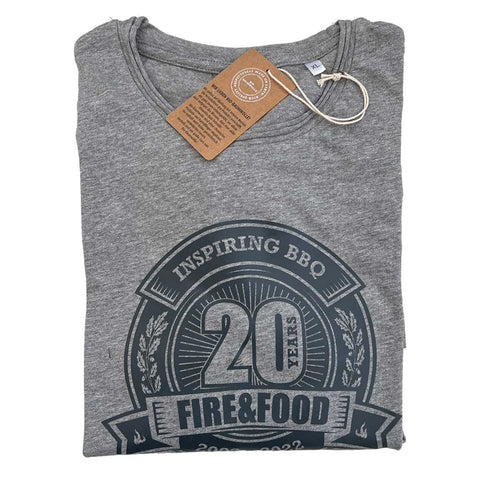The Tatars are coming: On the trail of culinary legends
"Scratch a Russian and a Tatar appears." This Russian proverb expresses how deeply rooted the former nomadic people are with the various peoples in the territory of the former Soviet Union and beyond. No wonder, after all, the Tatars joined Genghis Khan's military campaigns in the 13th century and invaded parts of Asia and Europe. Even after the end of Mongol rule, they remained resident in the conquered territories. Today, the Tatars live mainly in the autonomous republic of Tatarstan or in northwest Bashkiria (both belong to the eastern European part of Russia), but also in the Urals, on the Crimean peninsula, in Western Siberia and Kazakhstan, as well as in other Central Asian republics. The Tatars were known as outstanding warriors and for their considerable skills in horse breeding, which they also kept for meat. Their love for their horses also seems to have given rise to the legend of “tartar”, which was established in Europe in the century before last as a term for shaved, raw beef.
Beefsteak à la Tatar: raw, finely chopped or grated beef, usually cut from the loin or roast beef. Served with an egg yolk placed in the middle
The Tatars are said to have put raw meat under their saddles to tenderize it for later consumption. But doubts quickly arose about this version in Western Europe, as people do not really want to imagine how the meat would have tasted after a ride lasting several hours, soaked in horse sweat - and raw at that. If the Tatars really did put raw meat under their saddles, this was perhaps more to prevent pressure marks on the horse's back, as horses were not working animals for them but valuable companions and were looked after and cared for accordingly - but this is also just a vague assumption. Another explanation is more plausible: the Mongolian riders, and thus probably also the Tatars, ate mainly dried meat, called "borts". This was cut into strips or ground into a kind of powder and stored in or on the saddle. To eat it, it only had to be boiled or added to hot tea. This chopped dried meat will probably be the namesake of our shaved beef.
Another Tatar myth reached us barbecue fans some time ago: the Tatar hat © from Austria. Apparently, the Mongolian horsemen had large, rollable metal cones with them on their expeditions, which were placed over the campfire. The meat could then be roasted on their large spikes, which was then eaten in convivial company. The Tatar hat © is said to be based on this. Well, the iron hat with the brim really does look like a Tatar hat - but more like the traditional headgear, which was usually made of wool. FIRE&FOOD asked some readers with Tatar roots, but no one would confirm this culinary tradition for us, and the World Wide Web is also silent on this story. However, the Tatars still enjoy their meals in convivial company today, and meat is an essential part of it - and this again corresponds to the ways in which the Austrian hat variant can be prepared. In typical Tatar cuisine, dishes are made from lamb, horse, beef, duck or goose meat and bread. Dairy products and various types of groats play an important role in making the menu varied. Meat is rarely fried, but often cooked in a "Kazan" or "Kazan" with onions in salted meat broth. It is served with bread baked in the oven "Tandir" ("Tandoor"). And even today, the Tatars salt or smoke meat to make it last longer and it is an important part of the food culture. So while you can't prepare historical Tatar dishes with the Tatar Hat©, that doesn't detract from delicious grilled food at all, as we found out when we tried it out!
The Tatarenhut is a type of barbecue fondue that can feed three to five guests. Available in two versions: with fuel paste or charcoal insert. Available from www.tatarenhut.at
The campfire for the convivial table
The Tatarenhut © is a type of barbecue fondue that can feed three to five guests, depending on what side dishes you serve or whether you plan to have several courses. You should expect around 200 grams of meat, fish, offal or sausages per person, all cut into bite-sized slices at least two millimeters thick. When grilling, each guest puts their food on the hot spikes of the hat according to their own taste, while the side dishes, for example, cook in the brim. Depending on the model, the Tatarenhut© is heated with charcoal or fuel paste; we used coconut briquettes in our tests. As soon as the hat is placed on the radiator, it begins to heat up and after a short time (around 5 minutes) you can start cooking. First, one or two slices of bacon should be skewered to grease the hat a little. You put a bouillon in the brim, which you can also refine with a little white or red wine, sherry, Noilly Prat or pastis - there are actually no limits to your culinary imagination, but you shouldn't season the bouillon too much, as the meat juices dripping down will add more flavor. It is also advisable to always have some broth to hand so that you can add more if necessary. Side dishes such as chopped vegetables or potatoes cook in this juice groove, and Asian noodles that are cooked quickly are also good.
All sorts of meat for Tartar hat
Ingredients:
Marinade for 800 g beef fillet:
• 500 ml strong red wine
• 1 tbsp peppercorns
• 1 bay leaf
• 1 onion, diced
• 1 garlic clove, pressed
• ¼ celery root, diced
Mix all ingredients and marinate the beef fillet overnight.
Marinade for 800 g pork fillet:
• Juice of 3 oranges
• 1 tbsp orange marmalade
• 1 fresh chili pepper, finely chopped
Mix all ingredients and marinate the pork fillet for at least 3 hours.
Marinade for 800 g hare fillet:
• 7 juniper berries
• 1 tsp pine needle tips
• 4 tbsp rapeseed oil
• 1 tbsp medium-hot mustard
• Grind the juniper berries and pine needle tips well and mix with oil and mustard. Rub the meat with it and marinate overnight.
Preparation:
Remove the meat from the marinade and dry it well with kitchen paper. Cut into bite-sized pieces and keep ready for grilling. Serve the grilled meat with various barbecue or fondue sauces.





















